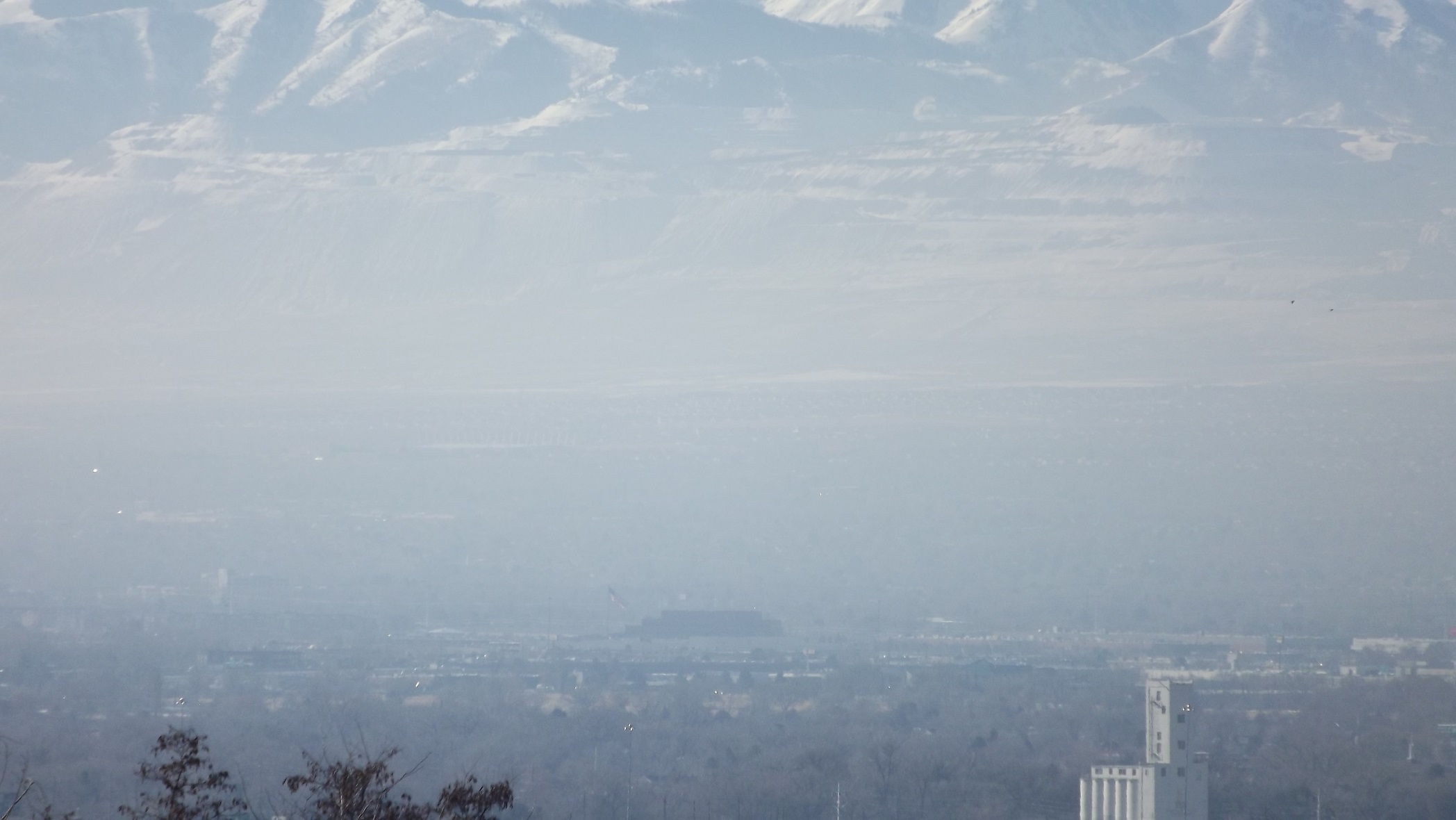Salt Lake City disappears in a haze of particulate air pollution – January 17, 2015
Utah Governor Gary Herbert has been asking the oil refineries that serve the Utah market to make gasoline that meets the federal Environmental Protection Agency’s Tier 3 standard available as soon as possible. Gasoline refined to the cleaner Tier 3 standard could have a dramatic effect on Utah’s air quality, since the majority of the pollution that gets trapped in the valleys of the Wasatch Front comes from the tailpipes of cars and trucks. But federal compliance issues and market forces could delay the availability of the cleaner gasoline for years to come.
Over the past two decades, the federal Environmental Protection Agency has added new regulations on the sulfur content of gasoline. Sulfur in motor fuel turns into sulfur dioxide and other compounds when it’s burned in our cars. This contributes to the PM 2.5 particulate pollution that makes the air on the Wasatch Front hazardous to breathe on our worst inversion days. The regulations have dropped the sulfur content from more than 300 parts per million in the 1990’s to 30 parts per million today. By 2017, most refineries in the United States will be required to produce fuel with a sulfur content of 10 parts per million (ppm). That’s the so-called Tier 3 standard that’s been getting so much attention as Utah looks for ways to improve our air quality.
The five Wasatch Front refineries and the Sinclair refinery in Rawlins, Wyoming produce more than 90-percent of the gasoline sold in the Utah market. To meet the new Tier 3 standard, they will have to invest millions of dollars in new equipment. But they also they have several legal work-arounds that will likely lead to delays.
First of all, these six refineries are classified as “small” under EPA regulations, which means they don’t need to meet the standard until 2020. Second, several of them are part of larger refinery systems. EPA allows them to meet the standard systemwide, meaning they can invest preferentially in larger facilities outside Utah. Third, refiners will also be allowed to purchase credits from other producers elsewhere in the country who are already meeting or exceeding that standard. It might be cheaper in some cases for Utah refineries to buy credits than to install the necessary equipment to produce the lower-sulfur fuel.
But there are some hopeful signs. Chevron’s Greg Hardy says his refinery and others will be in compliance by the deadline. Even today, some of the gasoline produced in Utah refineries already exceeds the Tier 2 standards, testing below 30 ppm. And the state of Utah thinks it may have a way to push refineries the rest of the way – free market competition.
Alan Matheson, the environmental advisor to Utah Governor Gary Herbert, believes the first retailer to advertise the availability of gasoline that meets the Tier 3 standards could have a significant advantage over its competitors as motorists have the opportunity to choose where to fill up. Tier 3 gasoline will cost more – estimates range from about one cent a gallon to as much as 25 cents. But for the civic-minded, that difference in cost on a fill-up could be less than a round-trip ticket on the TRAX light rail system.
A widely-cited EPA study shows that the valleys of the Wasatch Front would likely see more benefit from the availability of Tier 3 gasoline than any other region of the country. Whether that happens, and how soon it might happen, could be up to the market to decide.
Categories:


